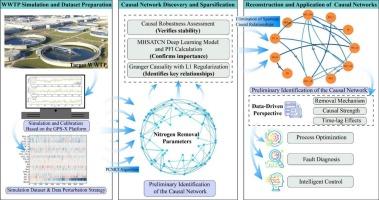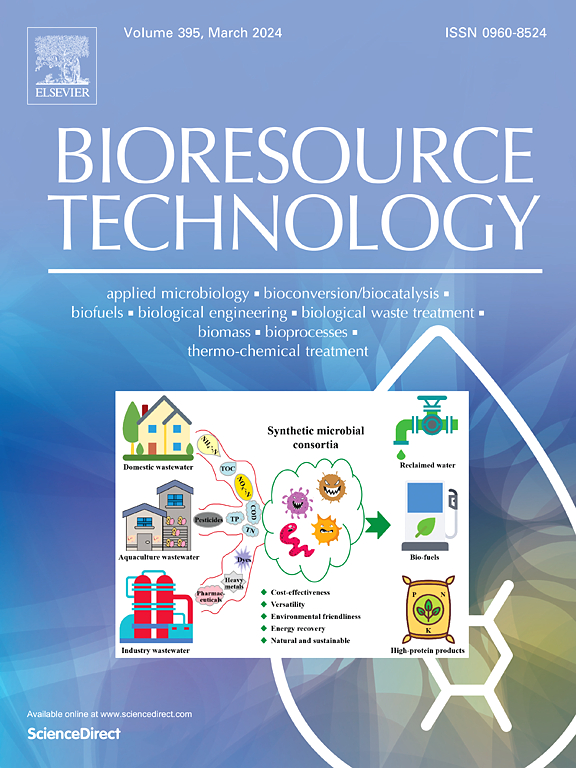Intelligent temporal causal inference framework for wastewater treatment plant nitrogen removal: Multi-stage spurious causal elimination
IF 9
1区 环境科学与生态学
Q1 AGRICULTURAL ENGINEERING
引用次数: 0
Abstract
Wastewater treatment operations require transparent, interpretable models for regulatory compliance and safety, yet the intricate mechanisms involved in biological nitrogen removal present significant challenges for achieving interpretable mechanistic understanding. To address this, this study proposes AquaCausal, a novel hybrid causal inference framework that integrates the time-aware Peter & Clark Momentary Conditional Independence (PCMCI) algorithm, deep learning, and a multi-stage mechanism to eliminate spurious causal relationships. A perturbed simulation dataset was generated and validated using a calibrated wastewater treatment plant (WWTP) model, establishing a benchmark for causal discovery. The framework systematically refines causal relationships through L1-regularized Granger causality testing, permutation feature importance analysis, and a four-dimensional robustness assessment. This process reduced initial potential causal relationships by 73 %, ultimately identifying 25 core causal relationships with high confidence. The derived causal network quantified key time-lagged dependencies, establishing an interpretable, data-driven representation of nitrogen removal mechanisms for optimizing treatment processes and facilitating adaptive intelligent control.

污水处理厂脱氮智能时序因果推理框架:多阶段伪因果消除
废水处理操作需要透明、可解释的模型,以符合法规和安全,然而,生物脱氮所涉及的复杂机制对实现可解释的机制理解提出了重大挑战。为了解决这个问题,本研究提出了aquacaal,这是一个新的混合因果推理框架,它集成了时间感知的Peter & Clark瞬时条件独立(PCMCI)算法、深度学习和多阶段机制来消除虚假因果关系。使用校准的污水处理厂(WWTP)模型生成并验证了扰动模拟数据集,建立了因果发现的基准。该框架通过l1正则化格兰杰因果检验、排列特征重要性分析和四维稳健性评估系统地提炼因果关系。这个过程将最初的潜在因果关系减少了73%,最终确定了25个核心因果关系。导出的因果网络量化了关键的滞后依赖关系,建立了可解释的、数据驱动的氮去除机制表示,以优化处理过程并促进自适应智能控制。
本文章由计算机程序翻译,如有差异,请以英文原文为准。
求助全文
约1分钟内获得全文
求助全文
来源期刊

Bioresource Technology
工程技术-能源与燃料
CiteScore
20.80
自引率
19.30%
发文量
2013
审稿时长
12 days
期刊介绍:
Bioresource Technology publishes original articles, review articles, case studies, and short communications covering the fundamentals, applications, and management of bioresource technology. The journal seeks to advance and disseminate knowledge across various areas related to biomass, biological waste treatment, bioenergy, biotransformations, bioresource systems analysis, and associated conversion or production technologies.
Topics include:
• Biofuels: liquid and gaseous biofuels production, modeling and economics
• Bioprocesses and bioproducts: biocatalysis and fermentations
• Biomass and feedstocks utilization: bioconversion of agro-industrial residues
• Environmental protection: biological waste treatment
• Thermochemical conversion of biomass: combustion, pyrolysis, gasification, catalysis.
 求助内容:
求助内容: 应助结果提醒方式:
应助结果提醒方式:


